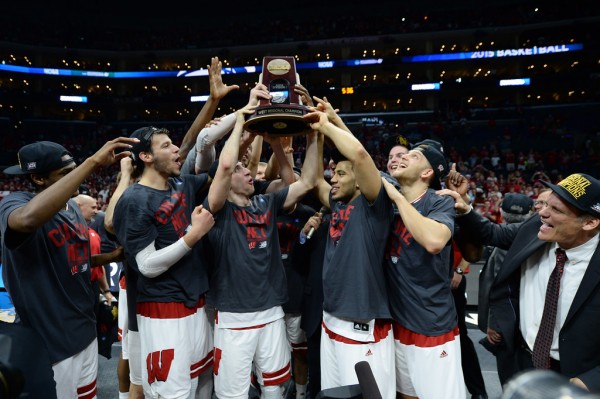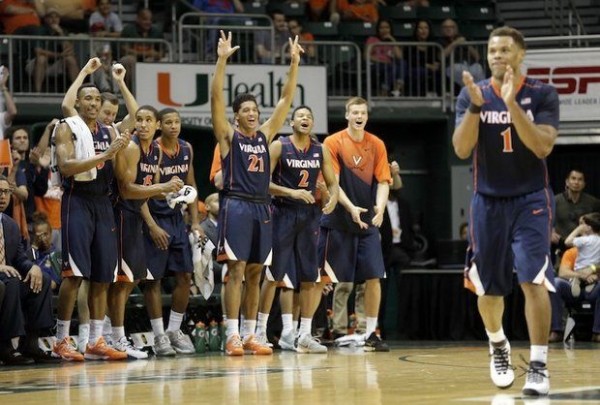No More Wisconsins: Is a Shortened Shot Clock Creating More Parity?
Posted by Will Ezekowitz on December 9th, 2015As anyone watching a college basketball game this season will have realized by now, the shot clock has been shortened from 35 seconds to 30. The NCAA made this change to inject some pace into what many decried as a slow and plodding game. And, as the NCAA itself has been very quick to point out in various news releases, this measure has worked. The number of both possessions and points per game are higher, and they have managed to do it without compromising quality of play, as the D-I average for efficiency has stayed at 102.1 points per 100 possessions (nearly identical to its 102.0 mark last year).

Do the New Rules Preclude Future Wisconsins From Great Success? (Hans Gutknecht/Los Angeles Daily News)
But is the outcome really so rosy? A closer look reveals that the NCAA’s change may have had the unintended negative consequence of creating more parity by reducing teams’ capacity to stylistically differentiate themselves from each other. How do we know this? Well, the standard deviations in team adjusted offensive and efficiency are already down, as you can see below.











































